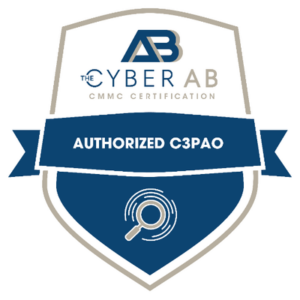
Introduction
For organizations within the Department of Defense (DoD), the Cyber Operational Readiness Assessment (CORA) plays a critical role in protecting sensitive networks and maintaining operational readiness. CORA consolidates threat, vulnerability, and impact data to equip decision-makers with actionable intelligence for securing their cyberinfrastructure. A key component of this assessment is the identification of Key Indicators of Risk (KIORs) and a strong focus on securing the network boundary.
Understanding Key Indicators of Risk (KIORs)
CORA is designed to provide DoD leaders with critical insights to enhance their cyber defense strategies. By focusing on Key Indicators of Risk (KIORs), CORA highlights areas of vulnerability, enabling organizations to take proactive measures to mitigate risk. These KIORs are developed using the MITRE ATT&CK framework, a comprehensive knowledge base of adversarial tactics, techniques, and procedures (TTPs) used in cyberattacks.
Through detailed analysis of MITRE ATT&CK tactics like initial access, privilege escalation, lateral movement, and data exfiltration, JFHQ-DODIN has created risk-based metrics that inform KIORs. By identifying high-risk activities, organizations can allocate resources efficiently to address the most prevalent and dangerous cyber threats.
As the cyber threat landscape continues to evolve, so do these metrics and indicators, which are constantly updated in alignment with the latest MITRE ATT&CK mitigations. This enables DoD Components to adapt their cybersecurity efforts in response to emerging threats and maintain a resilient defense posture.
Securing the Boundary: A Critical Focus
One of the core elements of CORA is its emphasis on securing the boundary—but what exactly does this involve?
The network boundary refers to any devices, systems, or public-facing assets that serve as entry points into a network. For DoD entities, these include systems that connect to external networks or other DoD components. These boundaries are prime targets for malicious actors and represent some of the highest-risk areas within an organization’s cybersecurity architecture.
As part of the CORA process, boundary reviews assess how well these external-facing systems are fortified against cyber threats. This analysis examines cyber-hardening measures, evaluating how effectively these systems prevent unauthorized access and how a potential compromise could spread across the broader DoD network.
In an environment where cyber threats are growing more sophisticated, securing the boundary remains a top priority. Ensuring these high-risk entry points are well-protected can significantly reduce the risk of malicious activity infiltrating and damaging critical networks.
The Agility of the CORA Process
A major strength of the CORA program is its ability to adapt to emerging cyber threats. As new cybersecurity directives, policies, or tools are introduced, the CORA team can swiftly incorporate them into their assessments. This includes updates to Security Technical Implementation Guides (STIGs) and other relevant security frameworks.
This agility ensures that CORA remains an up-to-date, dynamic process that helps DoD organizations maintain a high level of cyber readiness in a rapidly changing threat environment. As KIORs and boundary security measures evolve, organizations can continue to strengthen their defense strategies and stay ahead of adversarial activities.
Conclusion: A Proactive Approach to Cybersecurity
CORA’s focus on Key Indicators of Risk (KIORs) and securing the boundary provides DoD Components with a strategic and proactive approach to cybersecurity. By addressing the most vulnerable areas and adapting to new threats, CORA maximizes the impact of available resources and enhances overall cyber defense.
At SecureStrux, we specialize in guiding organizations through the CORA process. From preparing for boundary reviews to aligning with the latest MITRE ATT&CK mitigations, our team is dedicated to helping you strengthen your cybersecurity posture and stay ahead of evolving threats. If you have any questions or would like to learn more about how SecureStrux can assist your organization, please don’t hesitate to reach out to us.
The latest in Cybersecurity
Enter your email to get the latest news, updates,
and content on cybersecurity.
"*" indicates required fields




